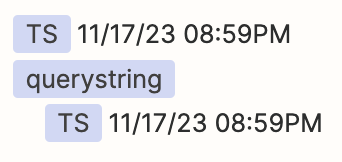How to Make Zap Webhook Trigger Requests Unique with Timestamp Values to Avoid Data Deduplication
Contribution by Troy Tessalone
Troy is a Certified Zapier Expert who puts Programmable Productivity to work for YOU!
SCENARIO
If you want to send the same data to run a Zap that uses a Webhook Catch Hook trigger, then you need to make the data request unique by adding a timestamp value.
(more info below about system generated timestamps)
DATA DEDUPLICATION
Info: https://help.zapier.com/hc/en-us/articles/8496260269965-Data-deduplication-in-Zaps
Deduplication is the process Zaps use to ensure your Zap only triggers for new information, avoiding duplicates.
Duplicate information is managed differently in Zap triggers and actions.
The deduplication system only checks within the same Zap.
WEBHOOKS
Help: https://zapier.com/apps/webhook/help
Webhooks are notifications of events that happen in an app and include a payload of data about the event.
HTTP REST request methods supported to fire a Zap that uses a webhook trigger: GET, POST, PUT
The examples below use the POST method.
Zap Trigger: Webhook - Catch Hook
This will generate a unique webhook URL to configure in the origin/source app that is sending the event notification.

TIMESTAMPS
System Generated Timestamps: https://help.zapier.com/hc/en-us/articles/8496275717261
Add a timestamp in your timezone
Enter the following command in your action step:
{{zap_meta_human_now}}
When your Zap runs, it will insert the date and time in the following format:
MM/DD/YY hh:mmAM/PM
Example
01/15/21 06:05PM
- This command will display the current date and time based on the timezone in your Zap settings.
- If you have no timezone selected in your Zap, it will use the timezone set in your Zapier profile settings.
- If you have no timezone selected in your Zap or your Zapier profile settings, it will use UTC.
EXAMPLES
NOTE: TS stands for timestamp.
CONFIG
Method: POST

Query String Parameter
How to add a dynamic timestamp variable as a query string parameter on a POST request.

Body Data Parameter
How to add a dynamic timestamp variable as a body data parameter on a POST request.

RESULTS
How the timestamp value comes thru on the Zap webhook trigger data payload.
- Top TS is for the Body Data Parameter approach.
- Bottom TS is for the Query String Parameter approach.





